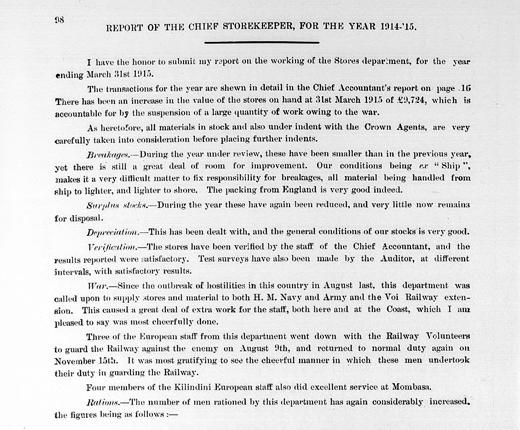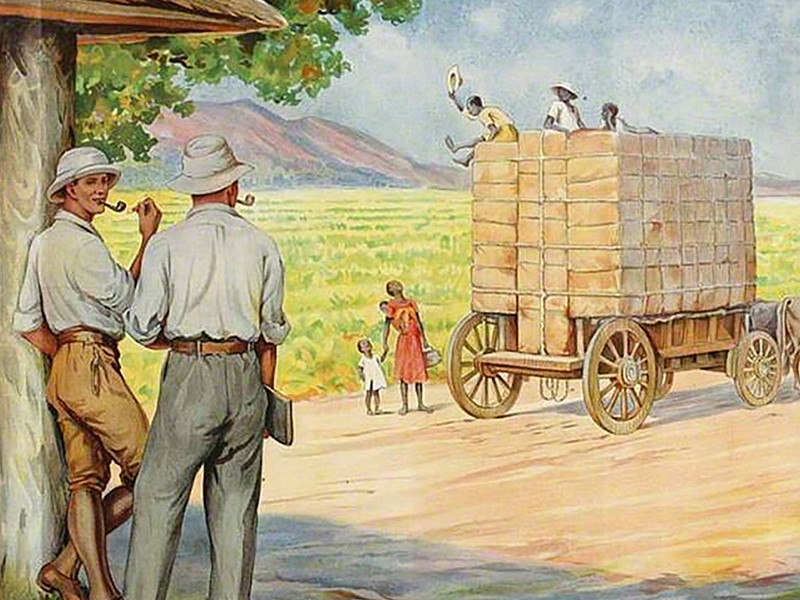
Kenya Under Colonial Rule, in Government Reports, 1907–1964

Annual departmental reports relating to Kenya, 1907–1964
In order to protect any one community against discriminatory legislation harmful to its interests, there will be created a Council of State with certain defined powers of delay, revision and reference.img 2
Access the full collection
Access the full archive of Kenya Under Colonial Rule, in Government Reports, 1907–1964.
Institutional Free Trial
Start your free trialRegister for a free 30-day trial of Kenya Under Colonial Rule, in Government Reports, 1907–1964, for your institution.
Institutional Sales
Visit Sales PagesellFor more information on institutional access, visit our sales page.
Single User License
Purchase a license below to view the full collection.
Already have a license? Sign in.
Kenya through the eyes of its colonial government

Kenya Under Colonial Rule, in Government Reports, 1907–1964 contains papers from the British colonial government in Kenya. The documents in this collection reveal the approach that the British took to colonial rule throughout the country. British settlers exploited Kenya’s natural resources, forcing indigenous farmers onto infertile land and making them work on European-owned farms and plantations.
The government reports contained in this collection cover several important developments and events in twentieth century Kenyan history, including the period that the country was controlled by the Colony and Protectorate of Kenya, the Mau Mau uprising that began in 1952, and the achievement of Kenyan independence in 1963. The documentation contained in this collection provides students and researchers with unique insights into the history of Kenya, its experience of British colonialism, and its turbulent path to independence.
Contents
Kenya Under Colonial Rule, in Government Reports, 1907–1964...
Annual departmental reports relating to Kenya, 1907–1964
Discover
Highlights
Insights
William Mackinnon was the first person to establish a formal British association in Kenya. He arrived in 1886, having been encouraged by the British government to establish British influence in the region. The Imperial British East Africa Company was subsequently chartered in 1888. Yet the company began to fail and in 1895 the British established the East Africa Protectorate, administered by the Foreign Office. In 1902, administration was transferred to the Colonial Office. The East Africa Protectorate became a British crown colony in 1920. The administrative reports in this collection illustrate the impact that this development had on Kenya’s economy.
The reports in this collection are arranged by department. Comparison of reports over time yields insights into how each area of the colonial administration, and the structure of that administration as a whole, developed throughout the period of British colonial rule.
This collection covers a period of Kenyan history that witnessed a large influx of migrants from British-administered India. They tended to become artisans, moneylenders, and traders. By 1921, Kenya was home to 22,822 Indian people, in comparison to 9,651 Europeans. Typically, their position in Kenyan society was between the British and indigenous Kenyans. Consequently, the Indian community were afforded certain privileges. Yet their social status was still deemed to be beneath that enjoyed by the British. That said, the Indian population proved vital to the British colonial project in the country, not least due to their familiarity with the English language. For example, Indian migrants carried out key roles for the colonial government, including assisting in the construction of the railway line which linked Kenya and Uganda. Thus, the documents in this collection highlight the widespread demographic and social implications of the consolidation of the British empire, such as mass migration between colonies.
The papers in this collection cover important events in Kenyan history, including the First and Second World Wars and the Mau Mau rebellion. This was a revolt against British colonial rule that lasted from 1952 until 1960. The rebellion was characterised by extreme violence on the part of Kenyans and the British.
The official reports in this collection cover the period that witnessed the passage of the Kenya Independence Act of 1963. The country nevertheless remained part of the British Commonwealth and so retained the British monarch as its head of state. Mzee Jomo Kenyatta was elected Kenya’s first prime minister on 26 May 1963. This saw the country’s new red, green, black, and white flag introduced. Yet Kenya only remained in the Commonwealth for a year. It proclaimed itself a republic on 12 December 1964.
Unlock Historical Research for Your Institution
Provide your students and researchers with direct access to unique primary sources.
Related Media













